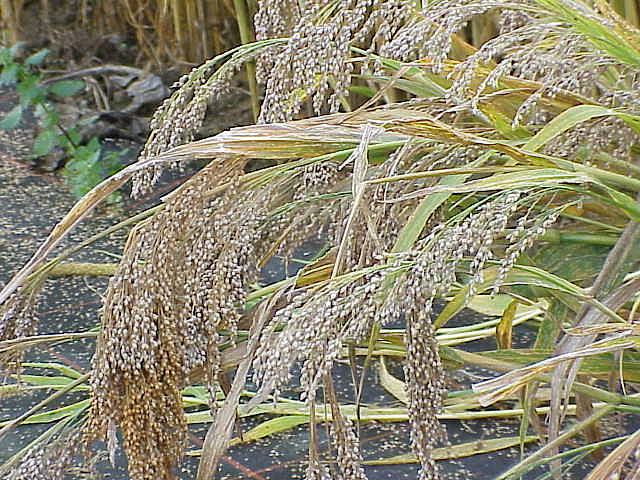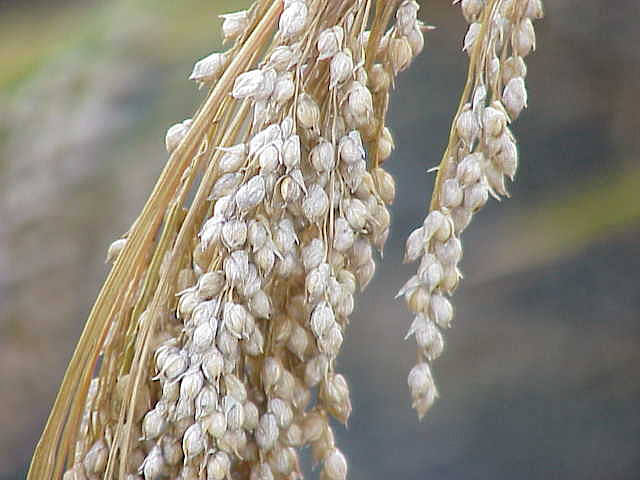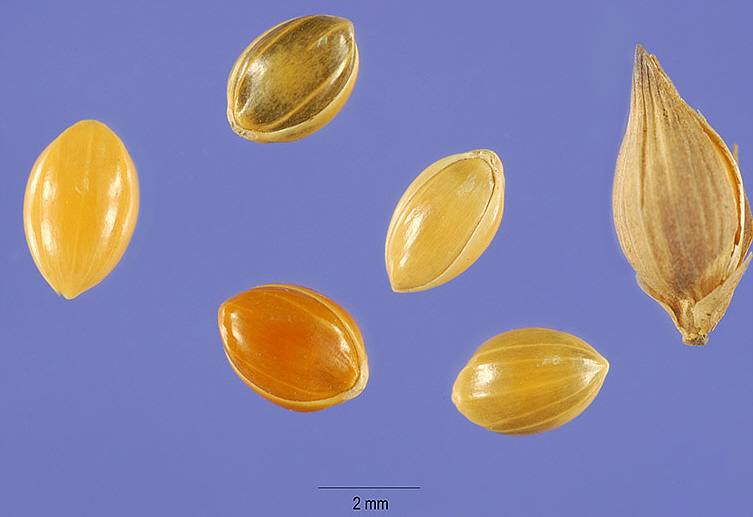

Zitierweise / cite as:
Carakasaṃhitā: Ausgewählte Texte aus der Carakasaṃhitā / übersetzt und erläutert von Alois Payer <1944 - >. -- Anhang A: Pflanzenbeschreibungen. -- Panicum miliaceum L. -- Fassung vom 2007-07-11. -- URL: http://www.payer.de/ayurveda/pflanzen/panicum_miliaceum.htm
Erstmals publiziert: 2007-07-11
Überarbeitungen:
Anlass: Lehrveranstaltung SS 2007
©opyright: Dieser Text steht der Allgemeinheit zur Verfügung. Eine Verwertung in Publikationen, die über übliche Zitate hinausgeht, bedarf der ausdrücklichen Genehmigung des Verfassers
Dieser Text ist Teil der Abteilung Sanskrit von Tüpfli's Global Village Library
WARNUNG: dies ist der Versuch einer
Übersetzung und Interpretation eines altindischen Textes. Es ist keine
medizinische Anleitung. Vor dem Gebrauch aller hier genannten Heilmittel wird
darum ausdrücklich gewarnt. Nur ein erfahrener, gut ausgebildeter ayurvedischer
Arzt kann Verschreibungen und Behandlungen machen!
Falls Sie die diakritischen Zeichen nicht dargestellt bekommen, installieren Sie eine Schrift mit Diakritika wie z.B. Tahoma.
Verwendete und zitierte Werke siehe: http://www.payer.de/ayurveda/caraka0001.htm

Abb.: Panicum miliaceum L.
[Bildquelle: Wikipedia]

Abb.: Panicum miliaceum L.
[Bildquelle: Wikipedia]

Abb.: Panicum miliaceum L.
[Bildquelle: Steve Hurst @ USDA-NRCS PLANTS Database. --
http://plants.usda.gov/java/largeImage?imageID=pami2_003_ahp.tif. -- Zugriff
am 2007-07-11. -- Public domain]
"Panicum miliaceum L. Graminae
Common names
White French millet, red French millet (Australia), prove, hog millet, brown corn millet, broom corn millet (United States), vari (India).
Description
It has coarse, woody, hollow stems from 30-120 cm, but usually to 60 cm. Stems round or flattened, 6-8 mm thick at the base, covered with hairs. The stem and outer chaff are green or sometimes yellowish- or reddish-green when the seed is ripe. When threshed, most of the seed remains in the inner chaff or hull. The hulls are of various shades and colours including white, cream, yellow, red, brown, grey and black. The bran or seed coat is always creamy white (Martin & Leonard, 1959).
Distribution
Grown since prehistoric times as a grain crop worldwide distribution in suitable climates.
Season of growth
Summer.
Rainfall requirements
It generally grows in areas receiving a rainfall within the range of 500-750 mm with a summer dominance.
Drought tolerance
It survives hot weather better than other millets.
Soil requirements
It prefers sandy loams to clay loams, but has a wide soil range. Germination difficulties may be encountered in heavy, self-mulching clays.
Ability to spread naturally
It will grow readily from scattered seed, but is usually sown as a crop.
Land preparation for establishment
A good, fine, firm seed-bed is required for good germination.
Sowing methods
As a grain crop it is normally drilled in through a small seeds box.
Sowing depth and cover
Sow at about 2.5 cm, harrow and roll to compress the soil around the seed.
Sowing time and rate
Sow mid to late summer at 10-11 kg/ha.
Number of seeds per kg.
176 000.
Seed treatment before planting
If seed-harvesting ants are a problem, dust with lindane. To control head smut, treat seed with a mercury or copper carbonate dust.
Tolerance to herbicides
Weed competition may be suppressed by spraying with MCPA at a strength of not more than 0.25 kg acid equivalent per hectare. Apply in the tillering stage before seed-heads form in the sheath.
Seedling vigour
Excellent.
Vigour of growth and growth rhythm
The plants tiller freely and may thus compensate for a poor initial stand. It flowers in 68 days and matures in 90-100 days.
Response to defoliation
It recovers very poorly from defoliation.
Grazing management
It is not usually used for grazing in Australia. It is grown widely in the USSR as a fodder plant in association with vetches and also as a cover crop in establishing lucerne (Romanov, 1976).
Suitability for hay and silage
Because of its hairy nature it is not very suitable for these purposes and other millets are to be preferred. It has been made into silage in Romania. Hay made from flowering plants is poor.
Toxicity
No toxicity has been noted.
Seed yield
Yields of up to 1 500 kg/ha can be obtained.
Cultivars
Numerous varieties of Panicum miliaceum are used throughout the world. Queensland uses 'White French Millet', with a creamy yellow glistening grain, and 'Red French Millet', with a red glistening grain. The United States uses 'Yellow Manitoba', 'Turghai' and 'Early Fortune' . 'Turghai' gives the highest yields. A variety called 'Deerbrook' from Czechoslovakia is grown in Wisconsin, United States. It has grey-green stripes on the hulls. Another variety, 'Crown', grown in Canada, has greenish-grey hulls (Martin & Leonard, 1959).
Frost tolerance
t is susceptible to frost.
Latitudinal limits
About 30°N and S.
Response to light
It needs full sunlight for growth.
Ability to compete with weeds
It does not compete successfully with weeds.
Maximum germination and quality required for sale
75 percent germinable seed and 97.3 percent purity in Queensland.
Palatability
It is palatable but hairy.
Response to photoperiod
It requires short day lengths for flowering (Evans, Wardlaw & Williams, 1964).
Natural habitat
Cultivation.
Fertilizer requirements
Soil tests show the need for a basic complete fertilizer.
Compatibility with other grasses and legumes
It is usually sown as a pure crop for grain, but may be combined with cowpea for grazing. Because the stems and leaves are hairy and fibrous, it is not very attractive as a grazing or hay crop.
Genetics and reproduction
2n=36, 40, 49, 54, 72 (Fedorov, 1974).
Seed production and harvesting
It is harvested by combine or, where the seed shatters, it can be cut early with a reaper and binder, cured and subsequently threshed.
Economics
It is an important food crop in the USSR, the Near East and India. It seems to have the lowest water requirement of any grain crop (308 litres of water per kilogram of dry matter produced).
Animal production
Usually cultivated for bird seed and poultry. A useful summer catch crop for emergency use if rain for planting is seasonally late.
Dormancy
There is no seed dormancy.
Tolerance to salinity
In the Ukraine, Chapko (1977) found P. miliaceum to have high tolerance to Na2CO3 in the soil."
[Quelel: FAO. -- http://www.fao.org/ag/Agp/agpc/doc/Gbase/DATA/Pf000280.htm. -- Zugriff am 2007-07-11]